Department News
"Education is the passport to the future,
for tomorrow belongs to those who prepare for it today."
— Malcolm X

Department News
"Education is the passport to the future,
for tomorrow belongs to those who prepare for it today."
— Malcolm X
“Art is not what you see, but what you make others see.”
- Edgar Degas -
The start of a new semester marks the change over of our Stage 4 classes. While we are sad to see our Semester One artists from year 7 and 8 leave us to experience Music, we are very excited to welcome a new round of year 7 and 8 students into our art rooms!
This term also marks the final term for our year 12 Visual Arts students. These girls have worked so incredibly hard over the years to develop their skills in practical and theoretical work and are now taking their final steps in their Visual Arts journey. A huge congratulations to these girls on their submission of their major Body of Work for final assessment. We are looking forward to being able to celebrate this achievement in the future Senior Showcase at the College. We wish you luck as you are about to enter your trial period. You’ve got this!
Year 8 Semester 1 Final Pots
Last semester Miss Rose’s year 8 Visual Arts class created some fabulous ceramic pet pots for their unit of work. The girls should be incredibly proud of what they have achieved in Visual Arts and we look forward to seeing you back (hopefully) in year 9 or year 10 elective Visual Arts in the future.
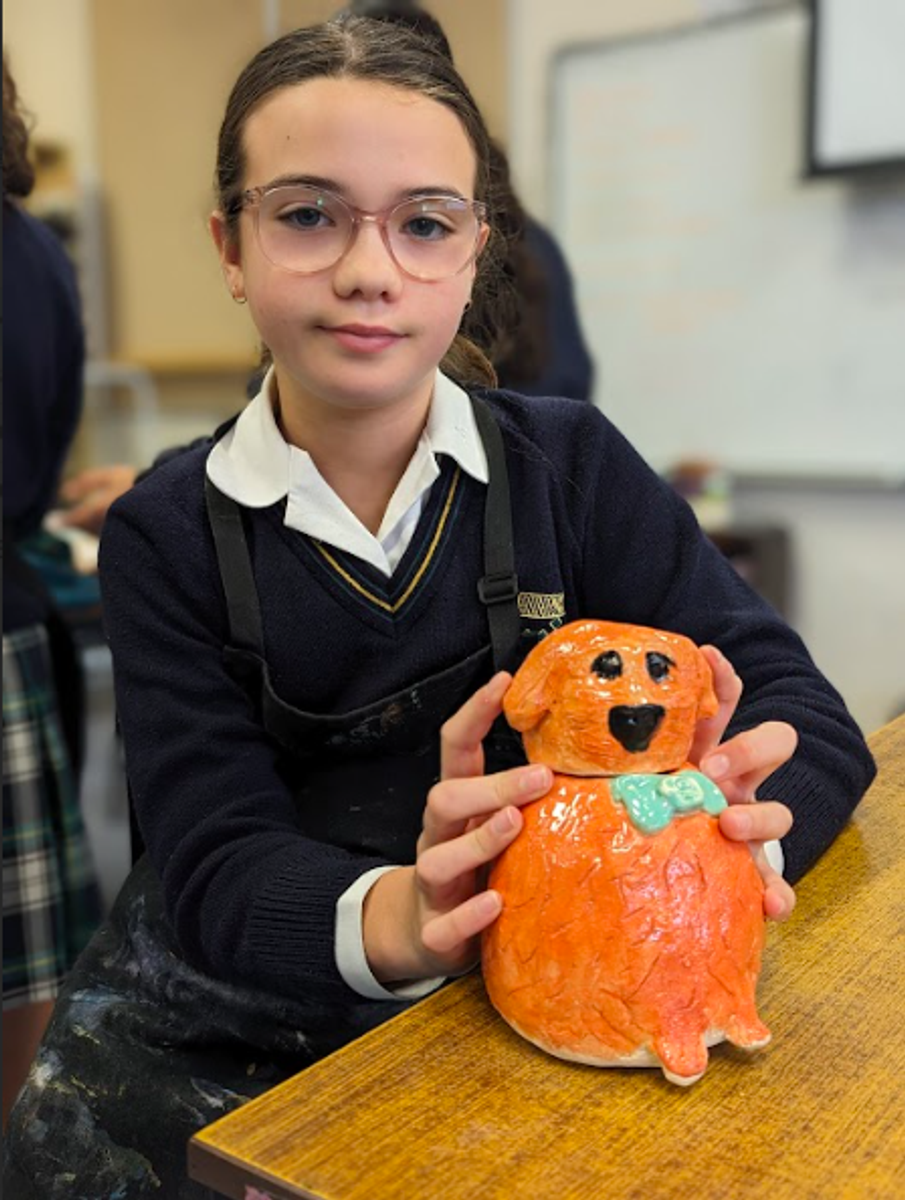
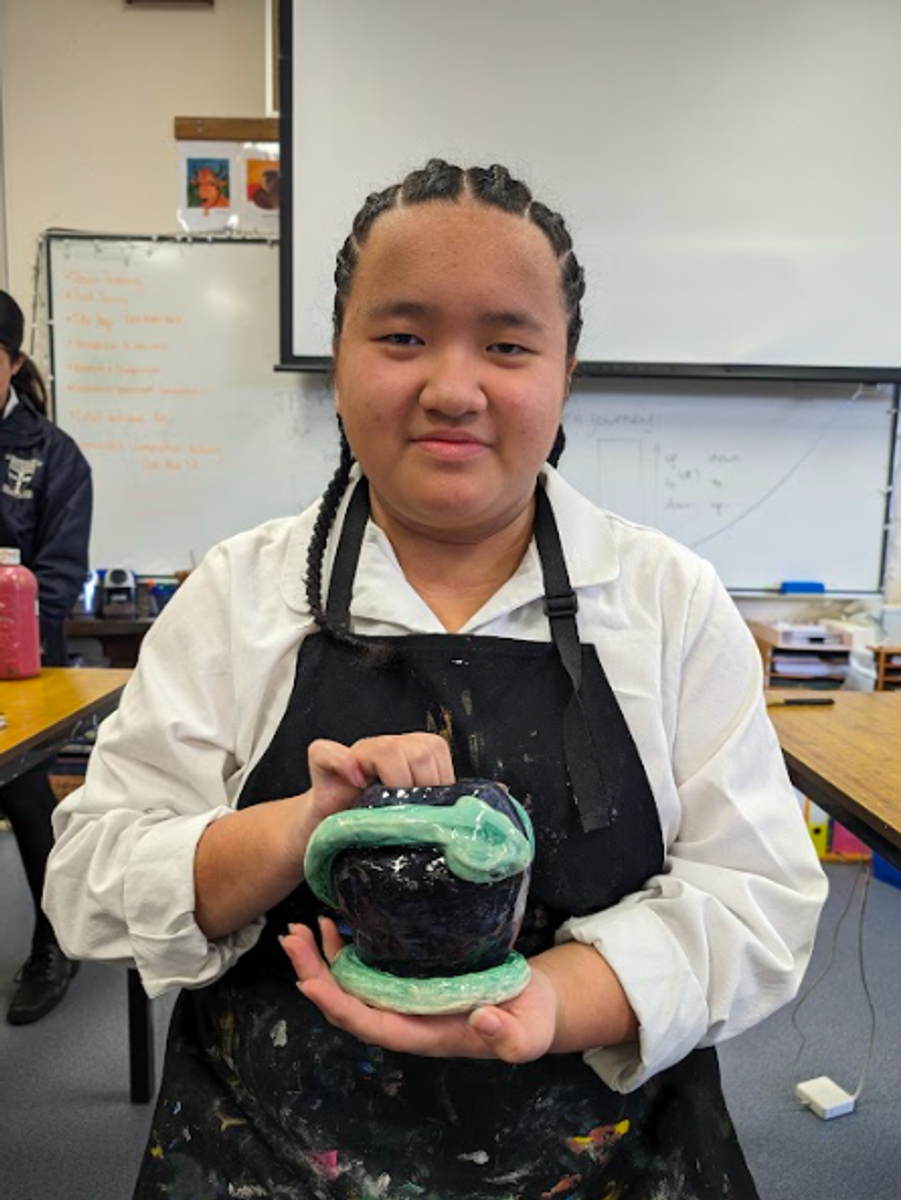
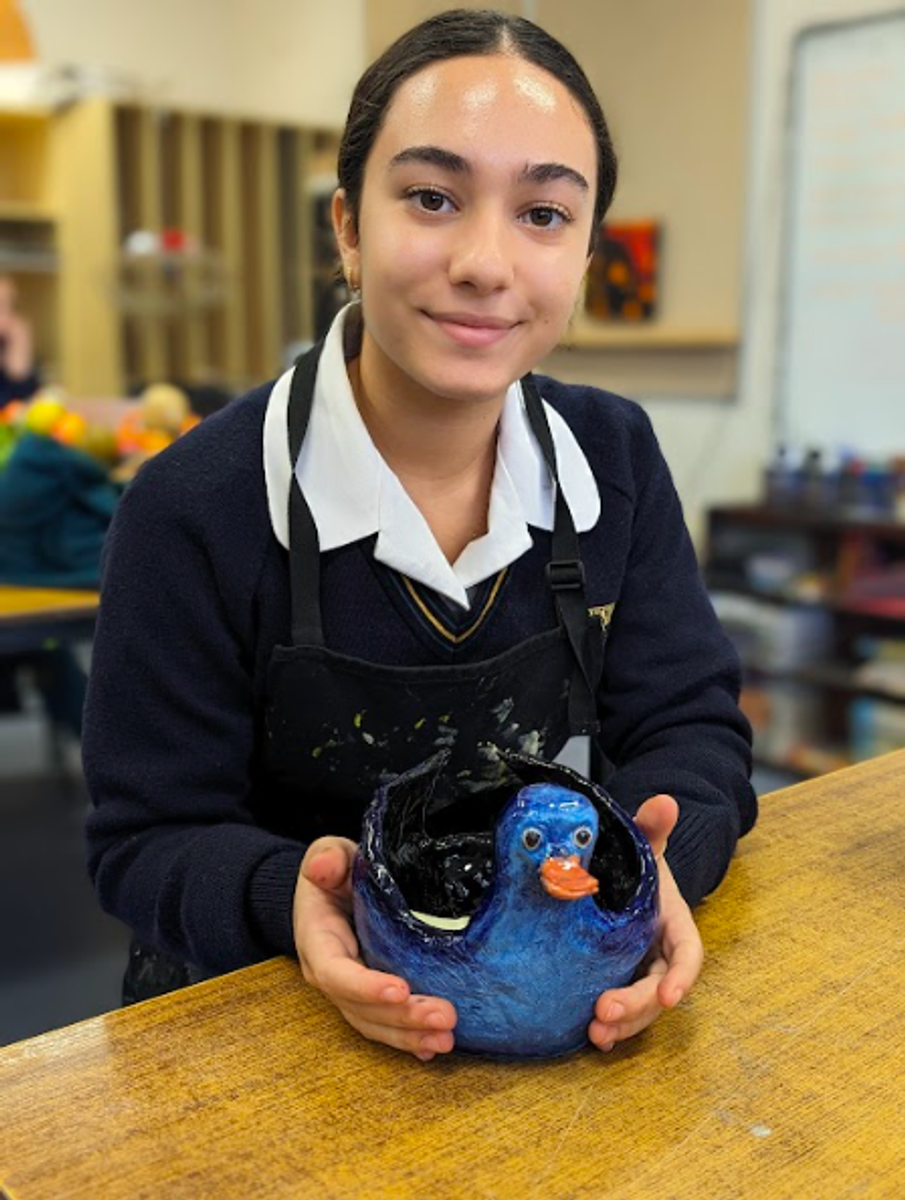
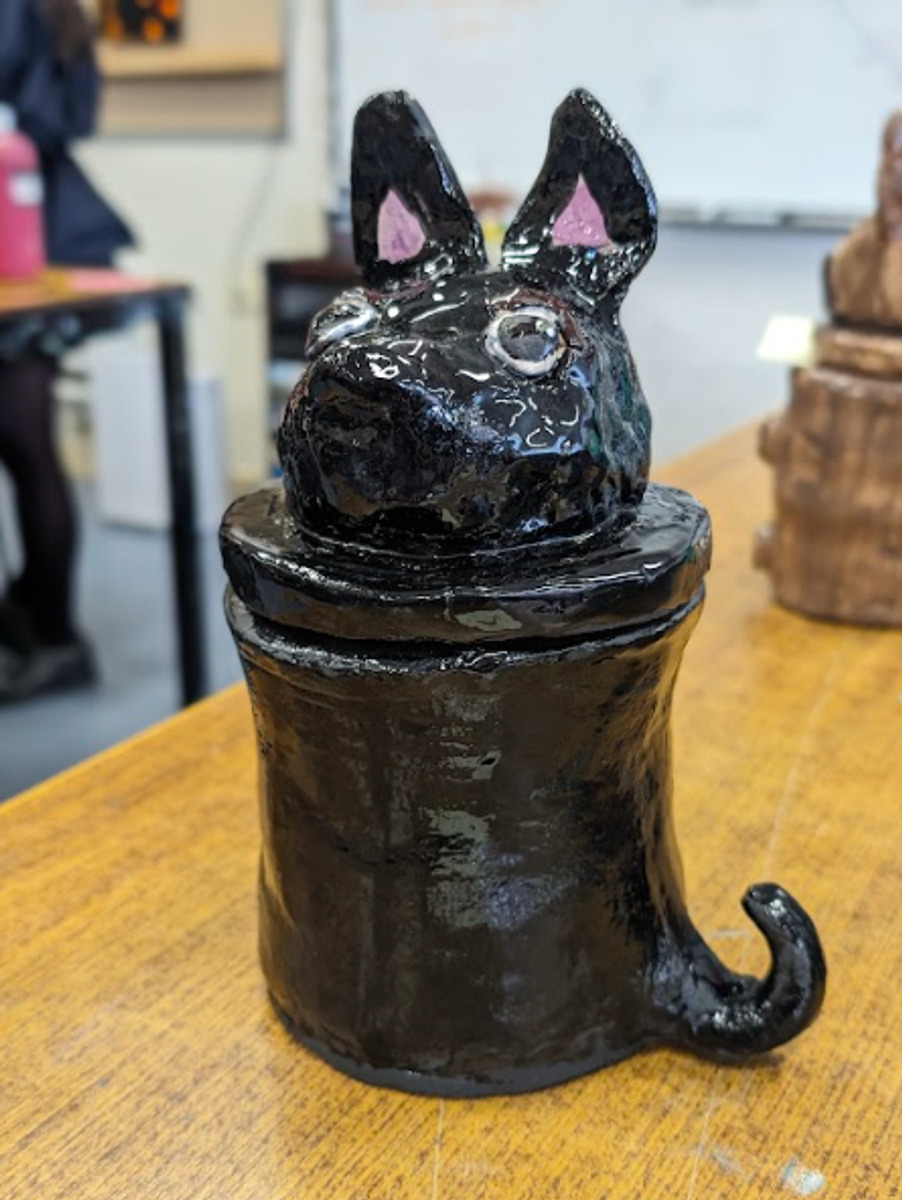




9 Photography & Digital Media
Year 9 Photography and Digital Media have explored dark room photography in the unit Light Moves. Students had the opportunity to create their own photograms. Students were inspired by the artist Marcel Duchamp and how he created visual stories in his photograms. Students learnt the darkroom process and how to safely develop their own photographs.
Year 9 Photography and Digital Media are currently focusing on the topic Shapes and Shadows. In this topic, the students are inspired by the photographic techniques of Australian photographers Olive Cotton and Max Dupain. The students implement Cotton and Dupain’s photographic techniques in their own photography series using the DSLR cameras and classroom studio space.
Miss Kismet Koromhaz
Teacher of Year 9 Photography & Digital Media
9/10 Visual Arts Excursion to the Chinese Gardens of Friendship and AGNSW
Year 9/10 Visual Arts students are currently exploring the topic of East Meets West. This unit provides them with an opportunity to explore how artists depict landscapes across Eastern and Western painting traditions. As part of their experience students had the opportunity to visit the Chinese Gardens of Friendship and complete a series of plein air drawings while on site. They also explored the North and South buildings of the Art Gallery of New South Wales, where they viewed artworks from a historical Eastern, Western and Aboriginal and Indigenous perspective. Below are some reflections from students:
On Tuesday we had the chance to go on an excursion to the Chinese Gardens of Friendship and the Art Gallery of NSW in the city. We started off in the gardens and as we arrived everyone had the chance to choose a spot and decide on 4 objects to do close up drawings on. Next in the gardens we were able to find a new spot and then work on creating 2 eastern style landscapes based on the gardens and what we could see, working from the top of our page to the bottom . Then after the gardens we moved onto the art gallery where we visited 2 different buildings on the campus as we completed a worksheet based on 3 different styled paintings. Throughout both buildings we were able to explore many different styles such as Indigenous art, eastern styled art and western styled art. On this excursion we were able to learn that each different style of landscape art is able to tell a story in its own way, for example the class was taught that through an eastern landscape we can interpret the painting as a journey from top to bottom or side to side. My favourite part of the day was definitely when we went into the Chinese Gardens of Friendship and just had time to draw what was around us, but I think the whole excursion was such a great experience!
Ella Dungey
On the 18th of June, art classes of year 9 & 10 got the opportunity to venture outside of school and physically view art relevant to our new topic: East meets West. We visited the Chinese Gardens and the National Art Gallery to assist us in different styles of landscape artworks which our task 3 is based on. In the Chinese Gardens we drew 4 close up drawings inside the garden and 2 landscape drawings, showing the journey process which many eastern landscapes follow. After the Chinese Gardens we headed to the National Art Gallery where we filled out a worksheet choosing 3 landscapes for western, aboriginal, and eastern themes. With western landscapes being like a frame you look into. Personally I really enjoyed looking at the western style landscapes because I like these types of paintings regardless if they are landscapes or depictions of humans.
Mirin Kwak
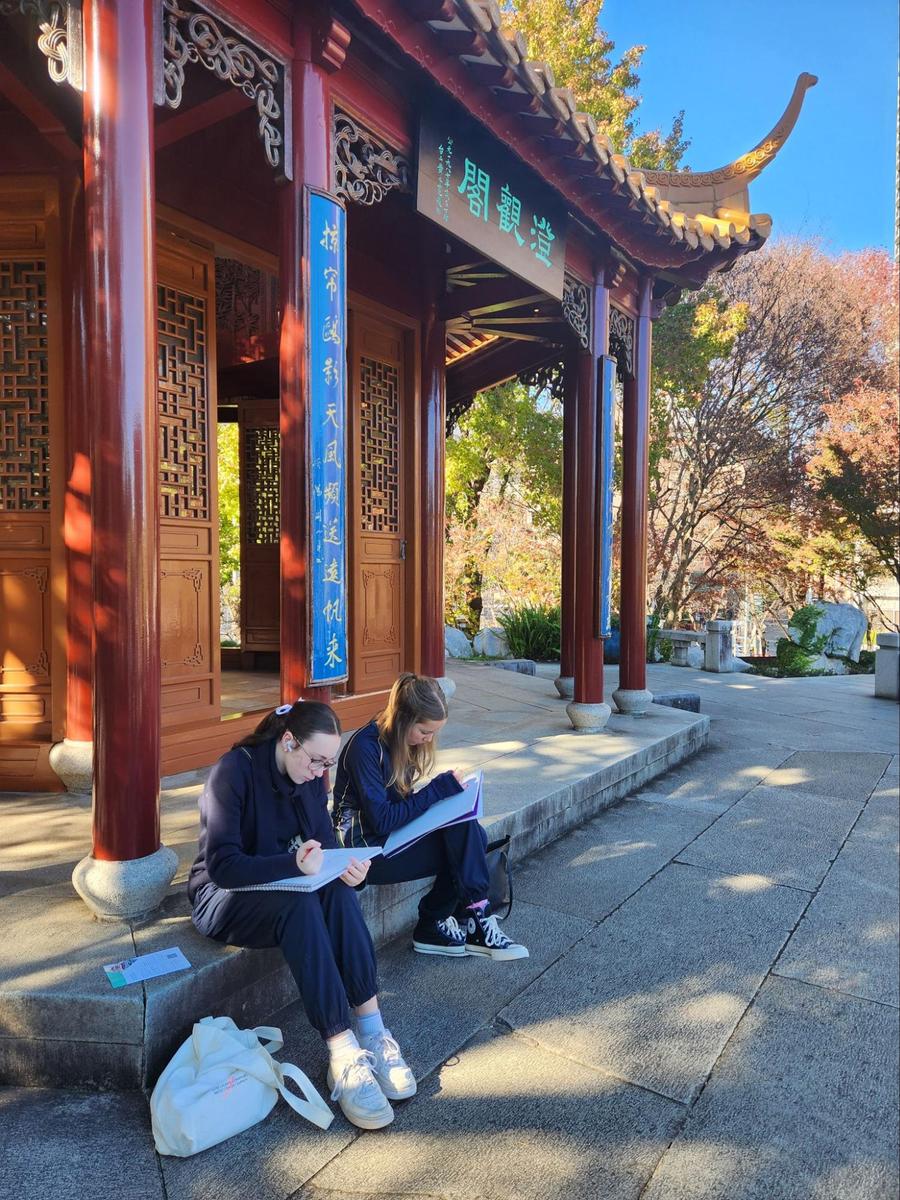
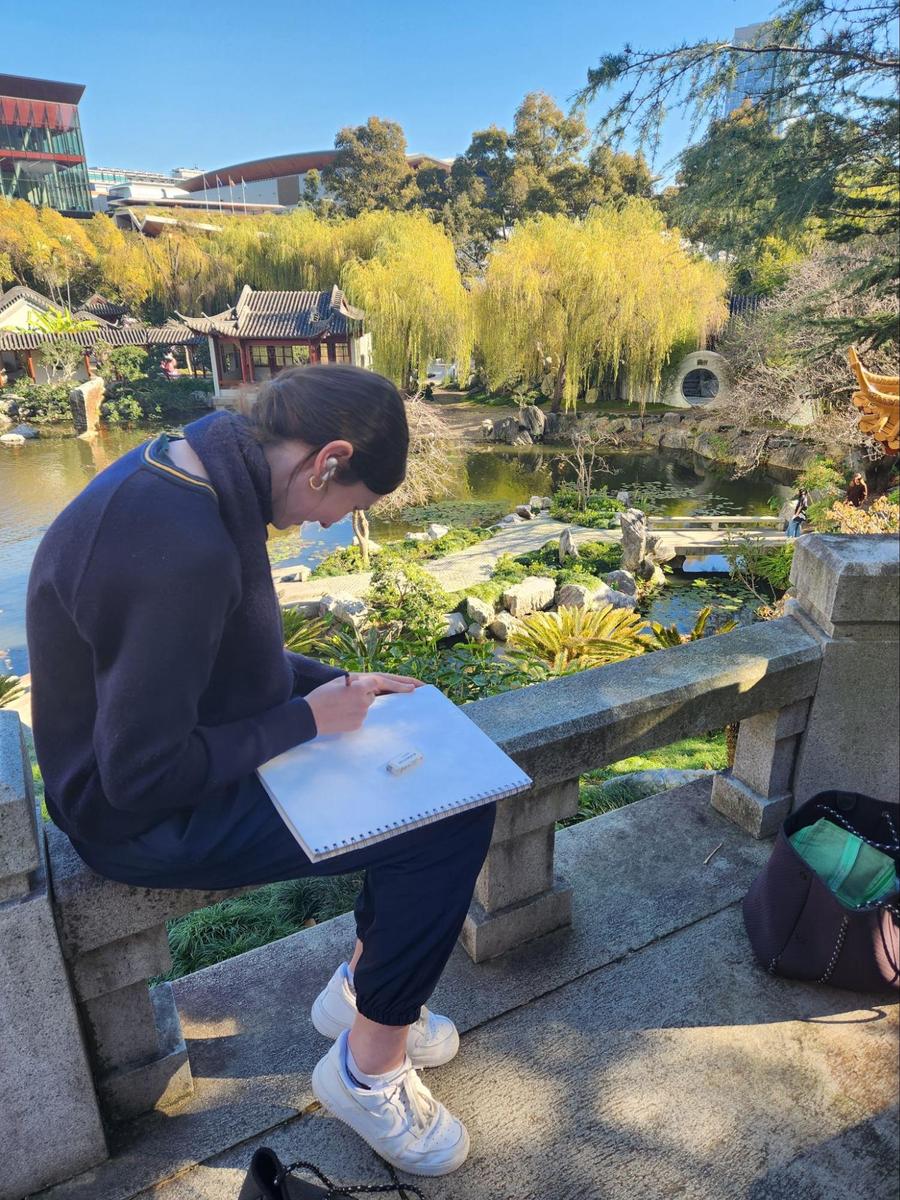
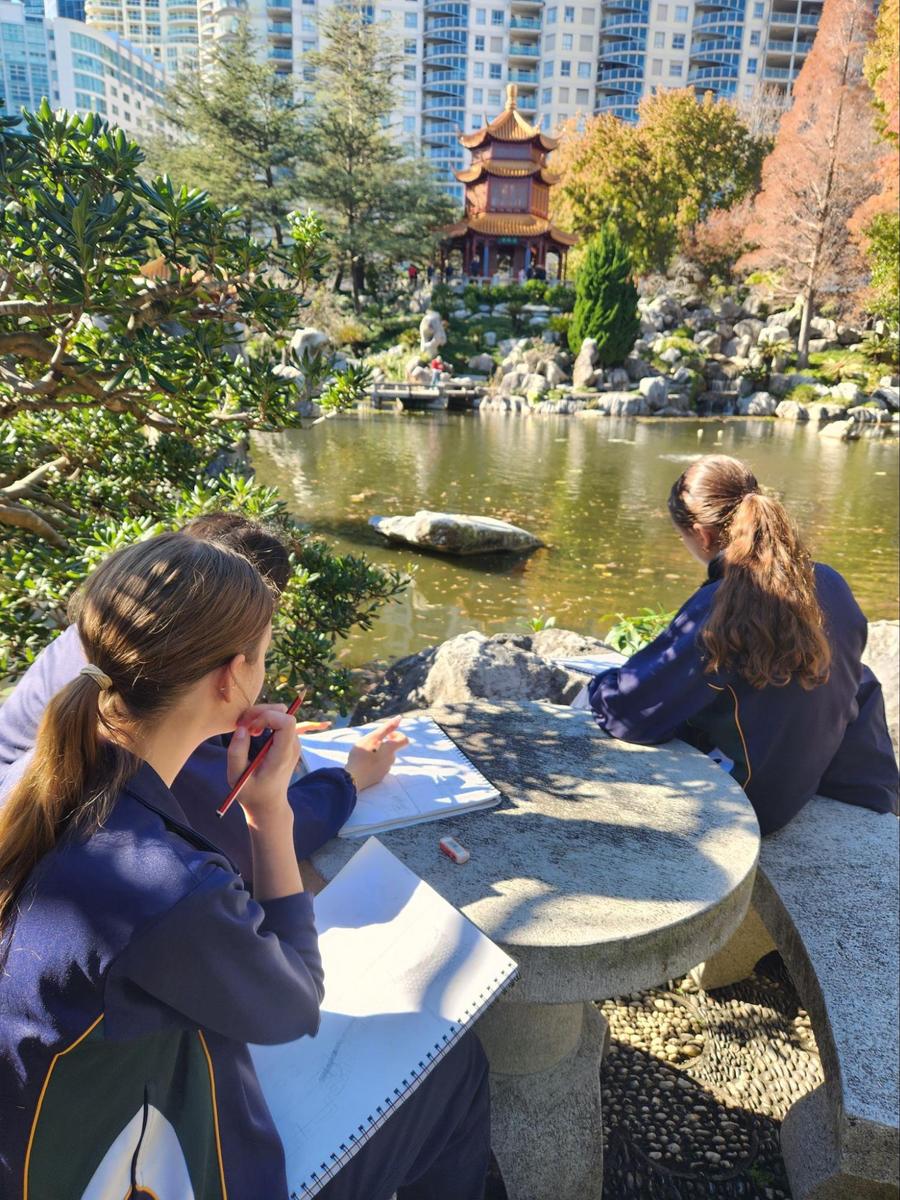
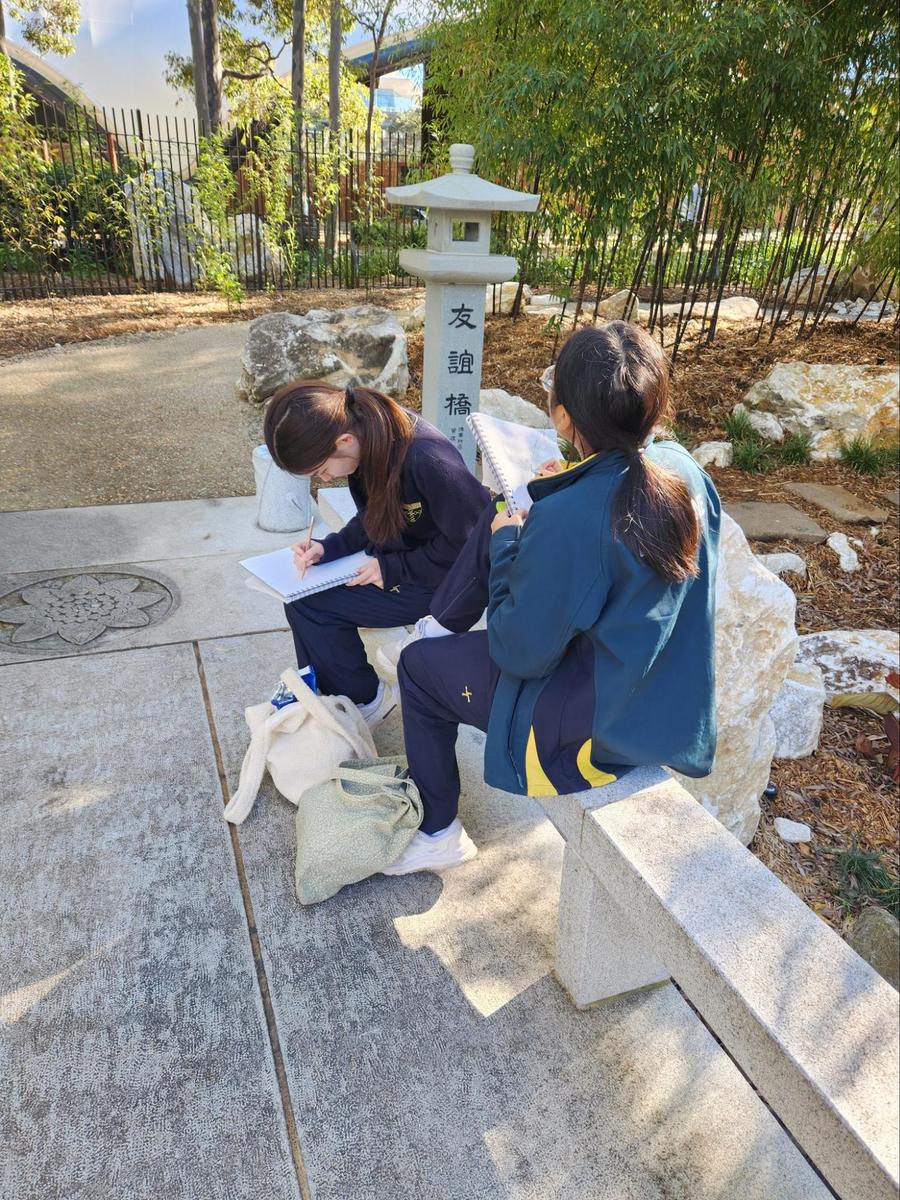
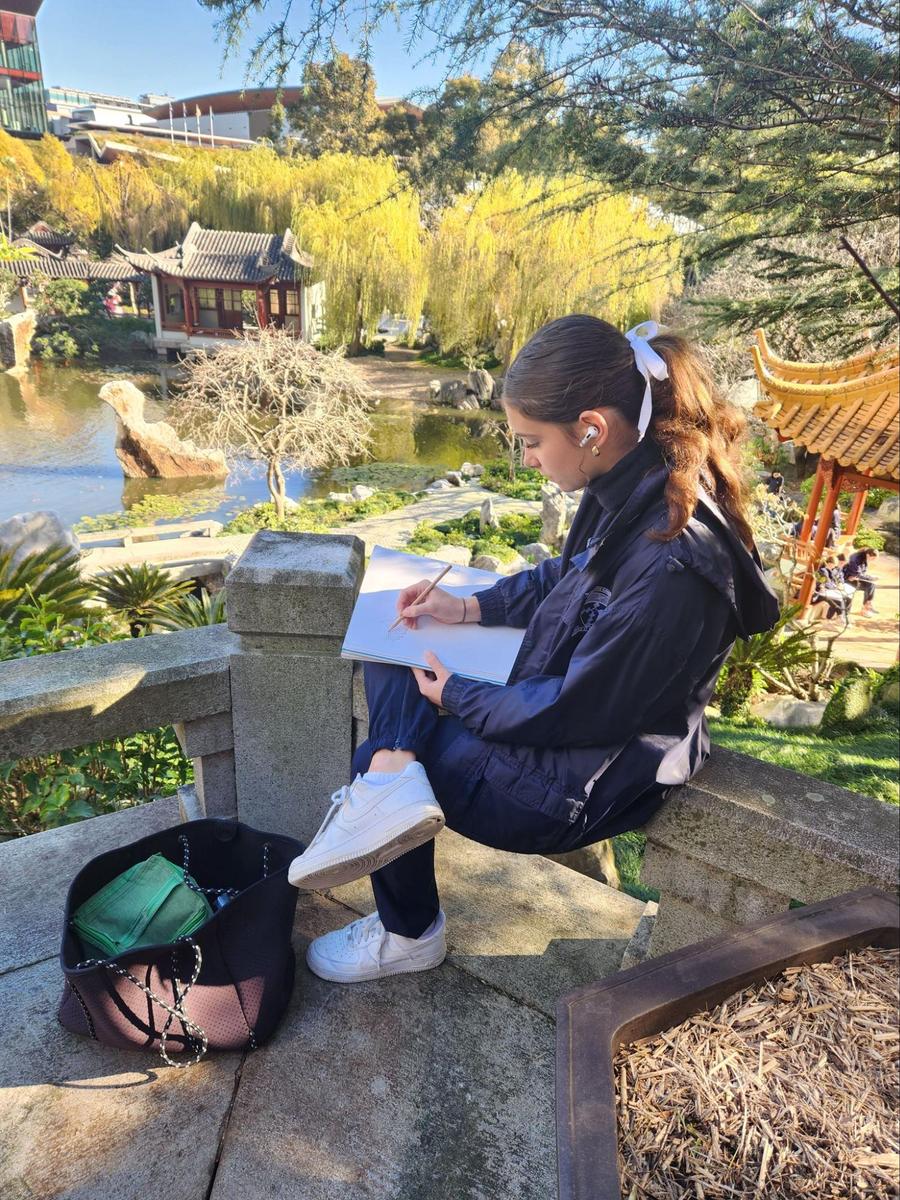
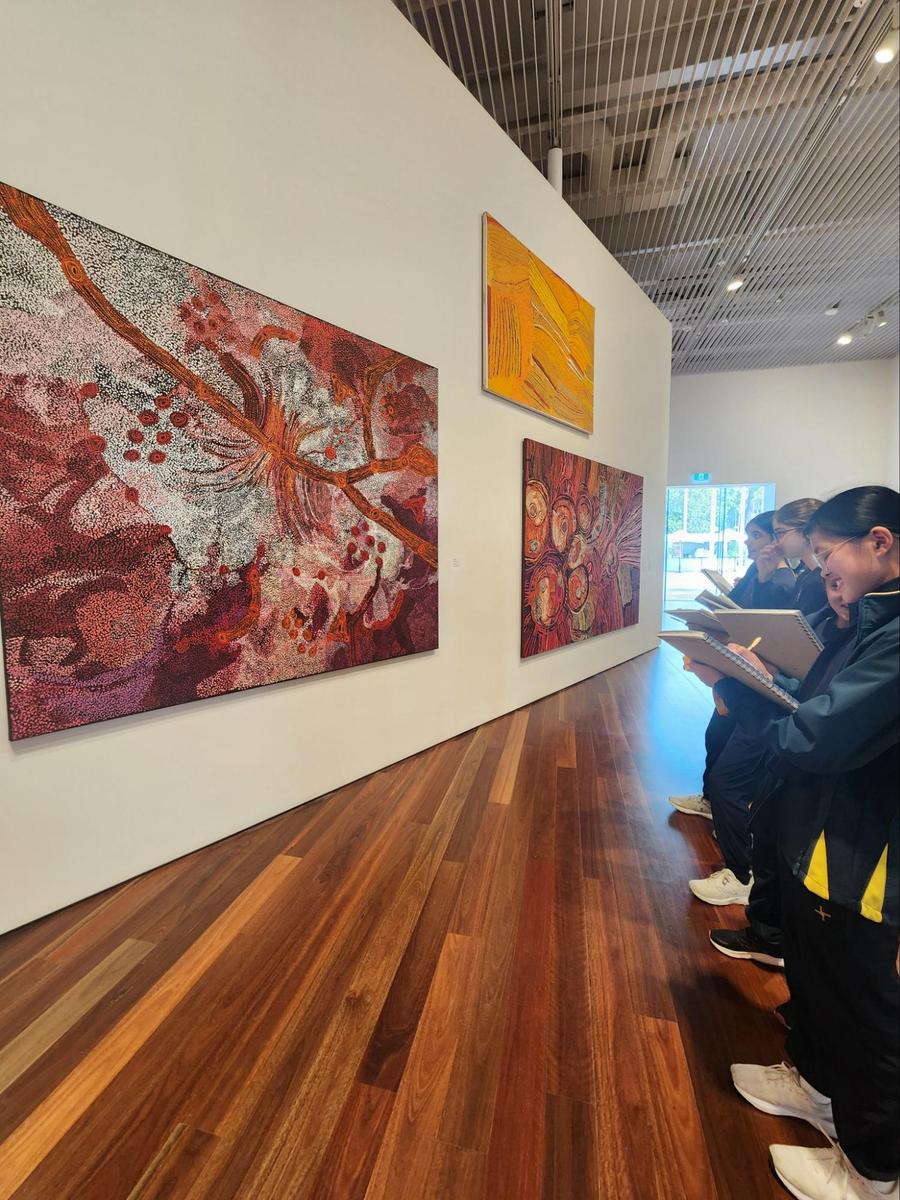
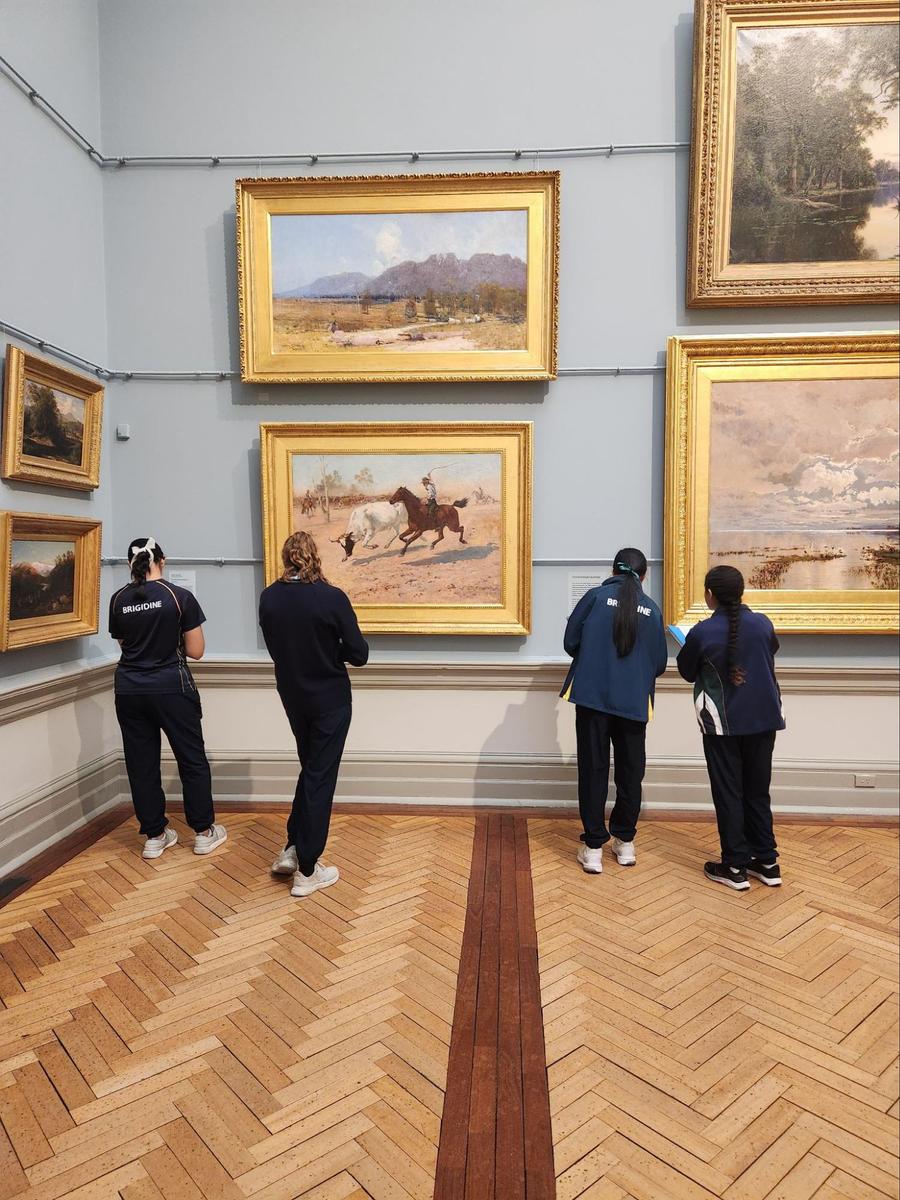

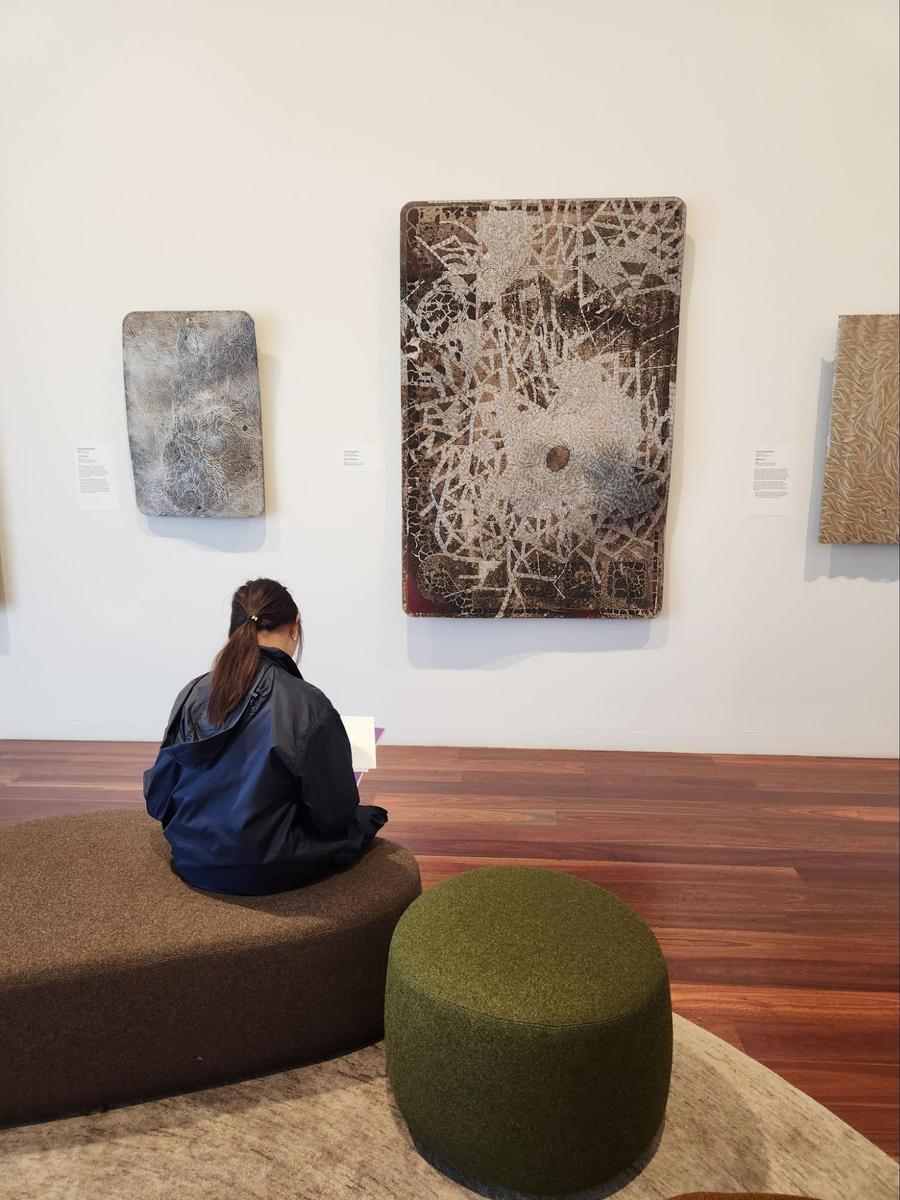
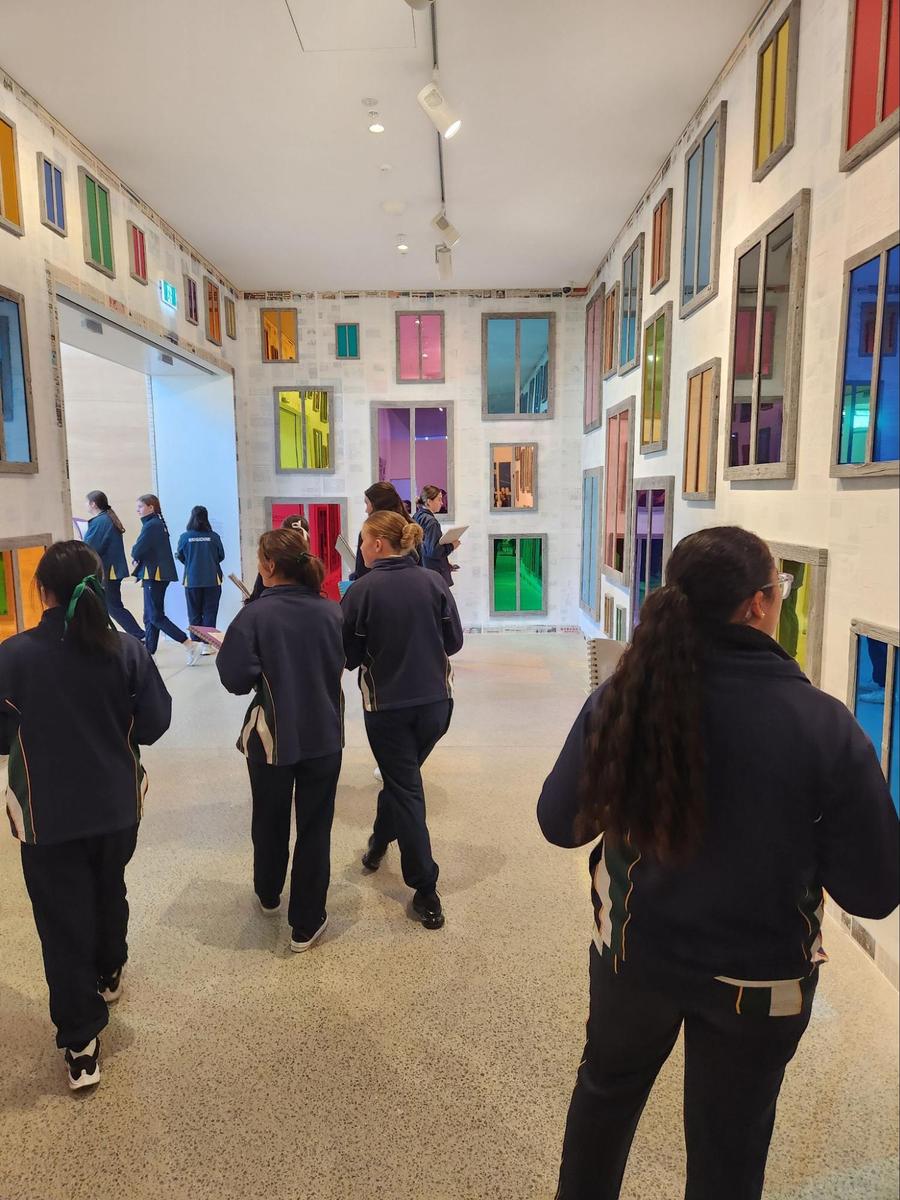










10 Visual Arts
In Year 10, students are delving into the fascinating world of photography and digital art. They are learning not only how to capture and edit photos but also how to create compelling digital and analog artworks. Students are gradually gaining the freedom to shape their creations according to their visions. They experiment with various techniques such as applying special filters and using advanced editing tools, based on their understanding of the artistry behind photography and digital design. Throughout their journey, students curate a personal portfolio showcasing their best works. This collection evolves over time, reflecting the growth and transformation of their ideas and interests as they refine their skills through practice.
Furthermore, students dive into the rich history of art and diverse perspectives on artistic expression. By studying different artistic movements and approaches, they broaden their creative horizons and develop a nuanced appreciation for photography and digital art as mediums for personal and collective expression.
Mr Adam Gant
Teacher of Year 10 Visual Arts


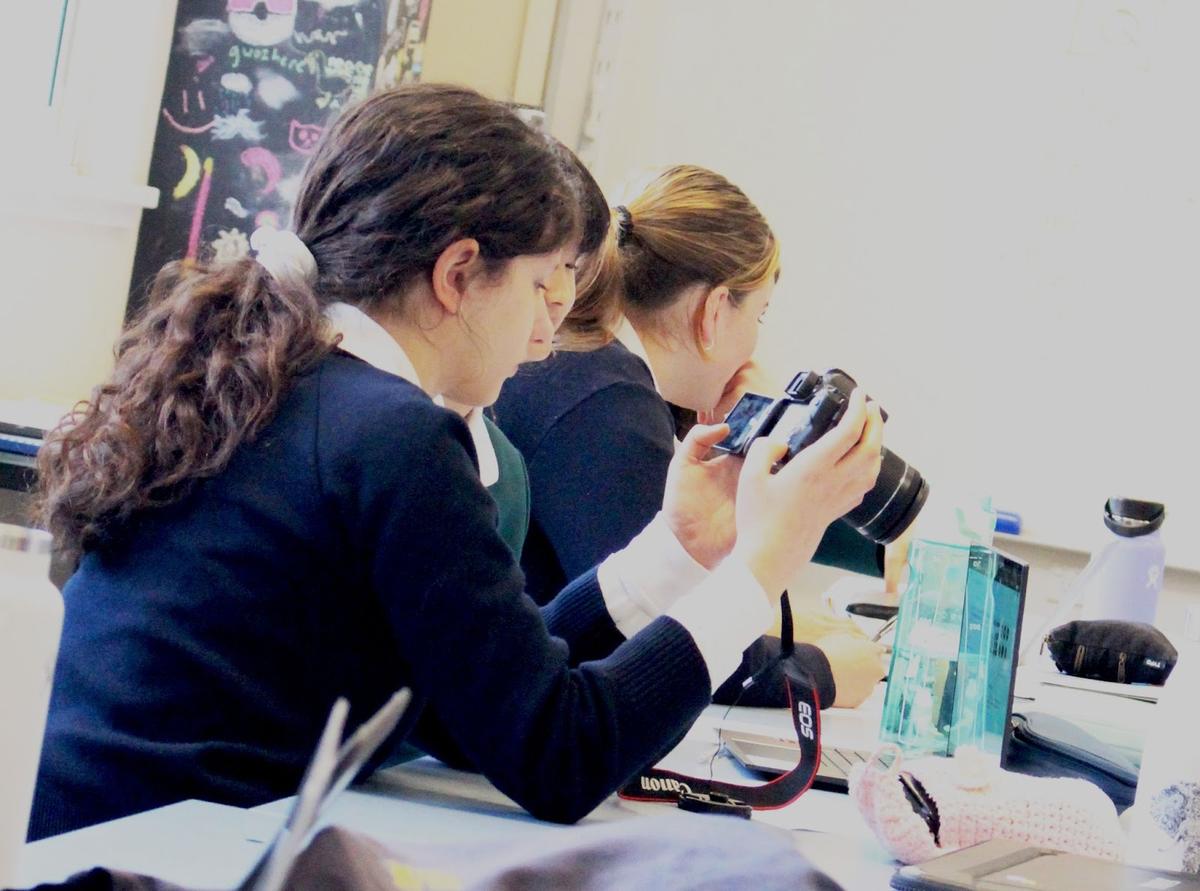

Year 11 Visual Arts: Figurative Sculptures
In Term 2, Year 11 Visual Arts students investigated examples of the human figure in Western art history. This included studying the masterful works of Michelangelo, whose Renaissance sculptures like "David" exemplify the idealised human form and the era's emphasis on anatomical precision and expressive detail. Students analysed how these historical pieces reflect the cultural, religious, and philosophical values of their time.
Students also explored contemporary artists whose works reinterpret the human figure through various mediums and perspectives. Artists Lindy Ivimey and Cristina Córdova, known for their evocative figurative sculptures, were investigated to gain insights into how contemporary artists use the figure to address current societal issues and personal experiences.
Students engaged in hands-on activities to learn the fundamentals of sculpting and working with clay by producing a free-standing, figurative sculpture. They experimented with different techniques and materials, understanding how these choices affected the overall impact of their work and the ideas they were communicating. These pieces not only showcased students' technical skills but also their ability to reinterpret and recontextualise existing narratives. Our girls chose to reimagine stories from art history and critique contemporary media culture through their work. This project encouraged students to blend historical knowledge with their art-making practice, producing meaningful and thought-provoking works.
Mr Vince Papa
Teacher of Year 11 Visual Arts
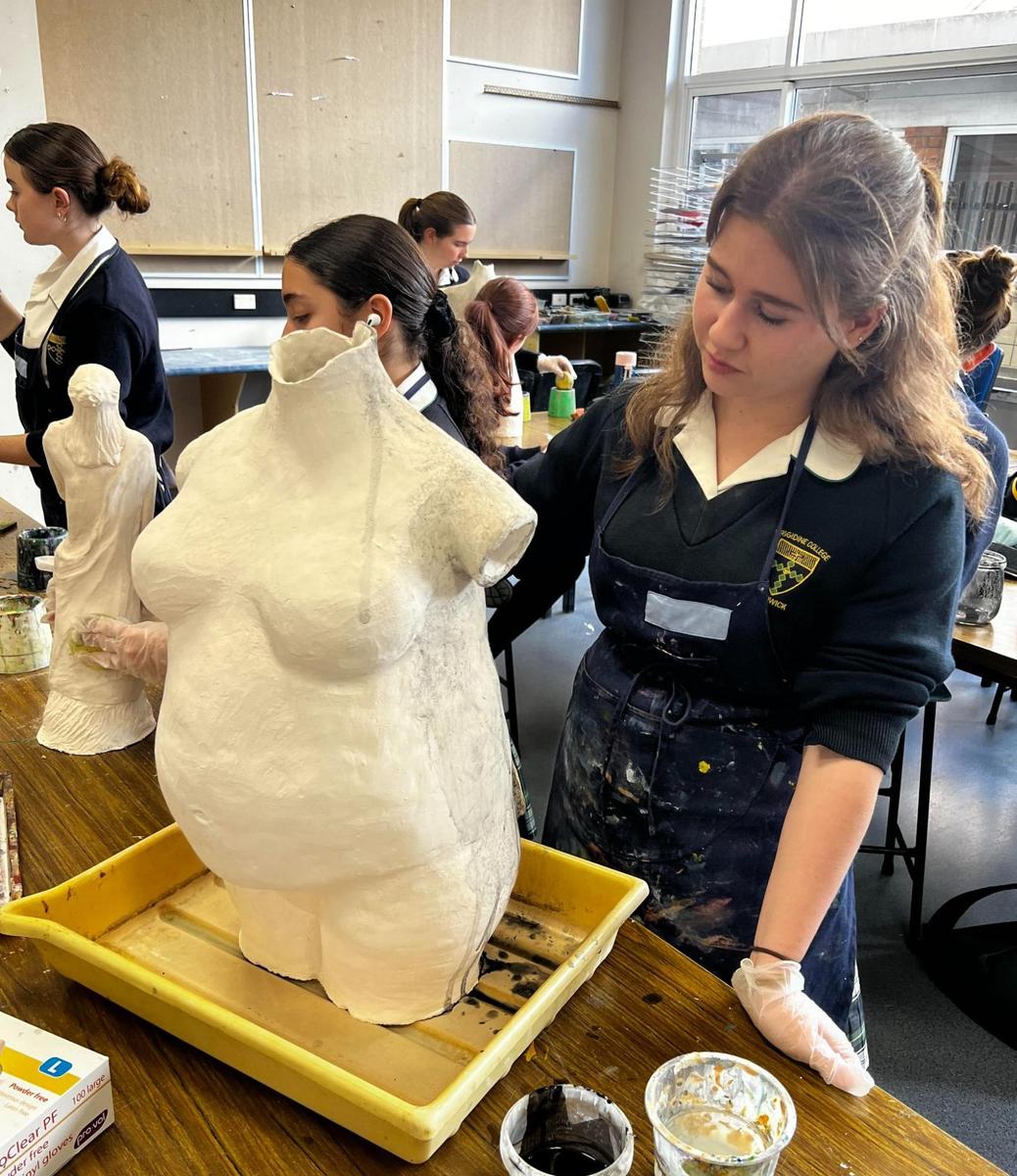
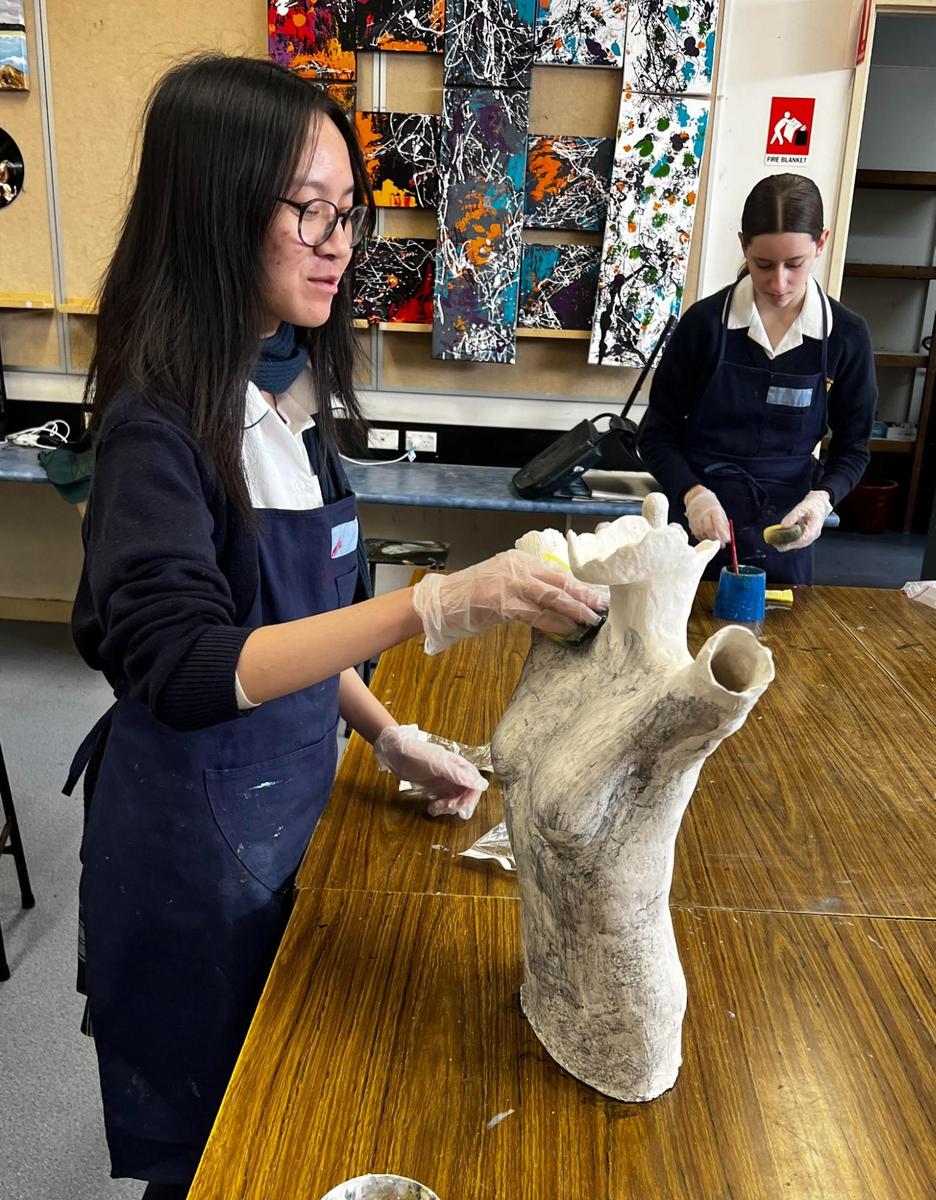
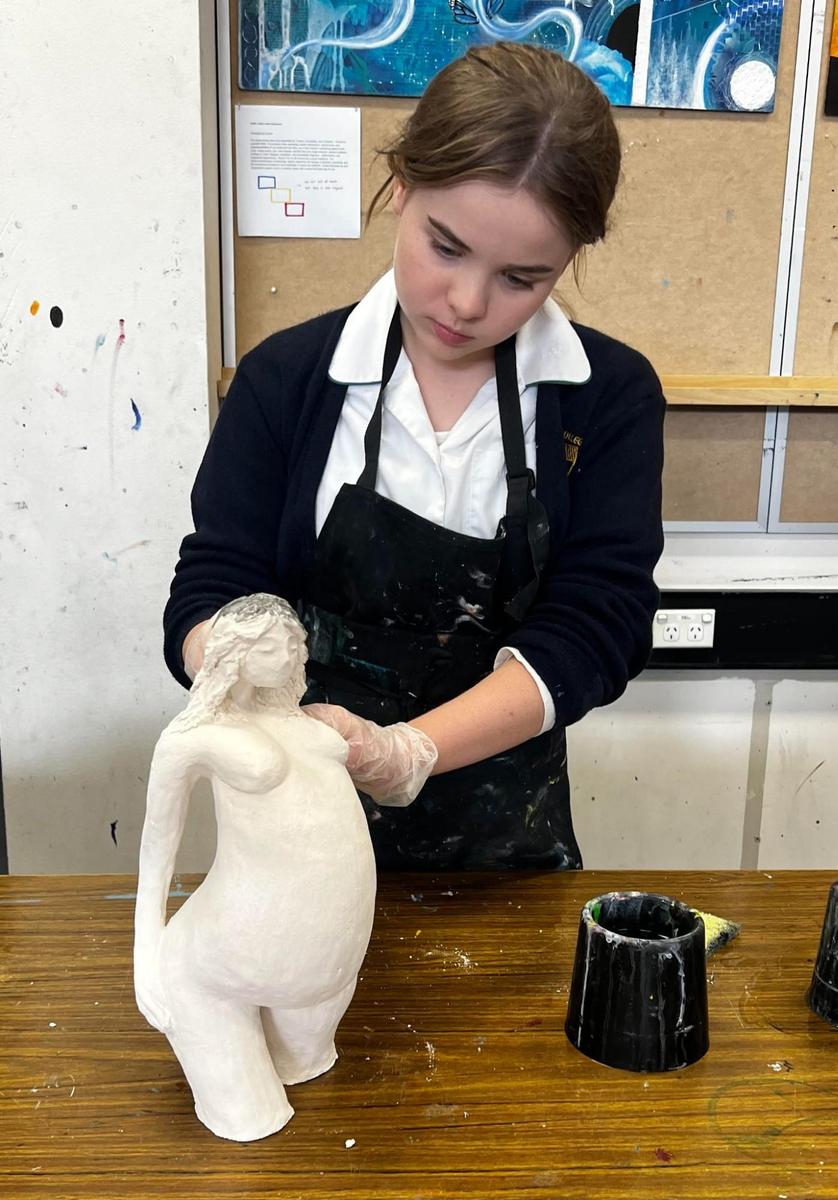
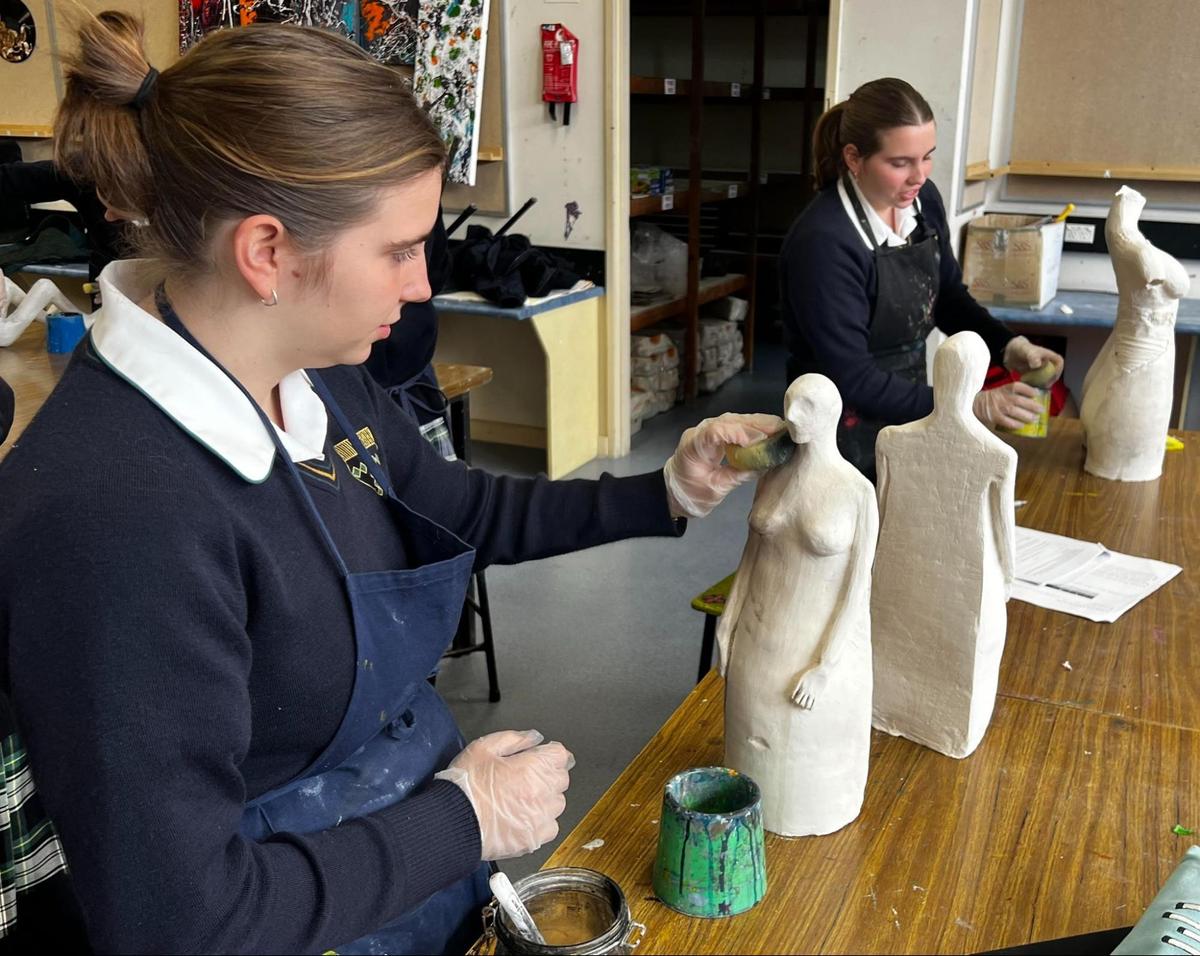
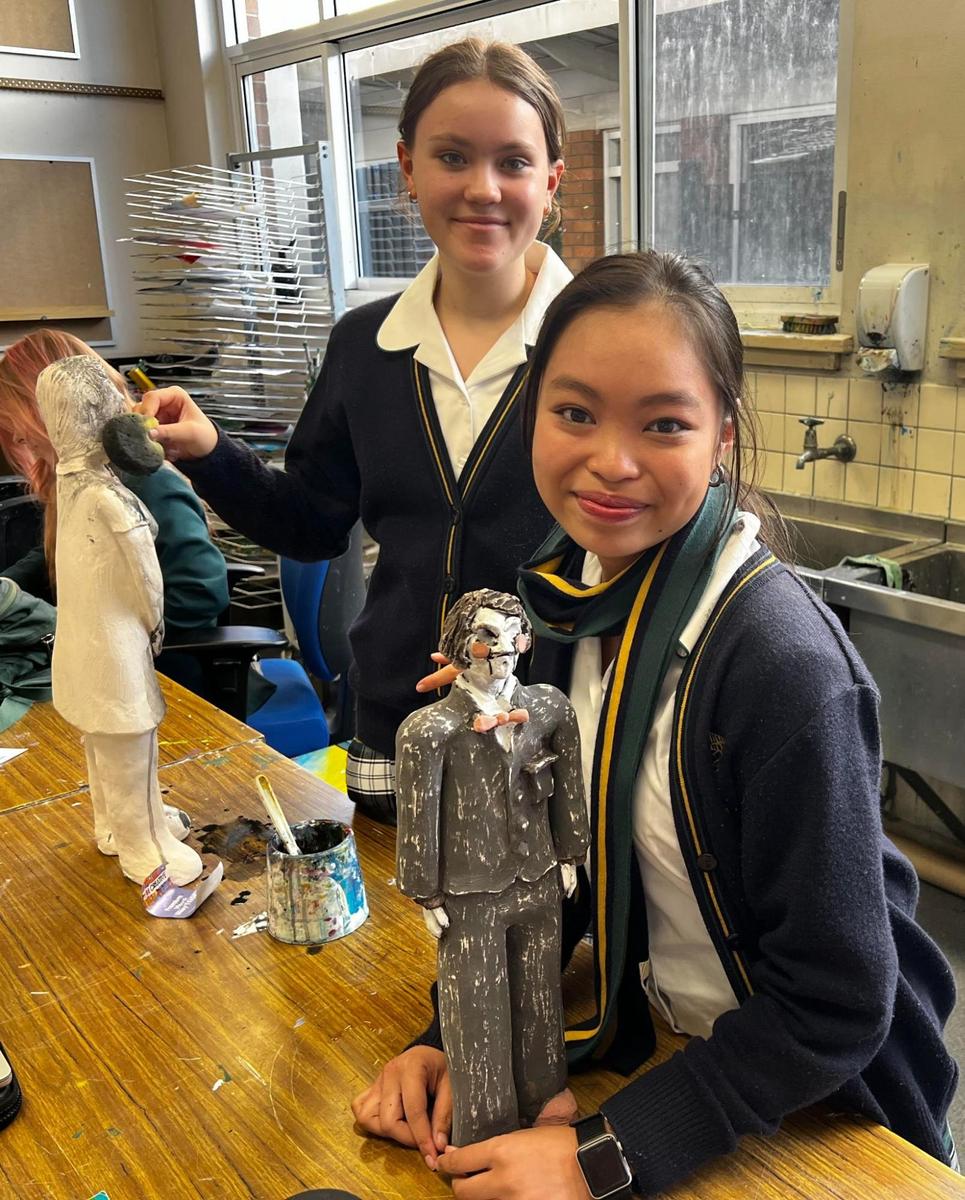
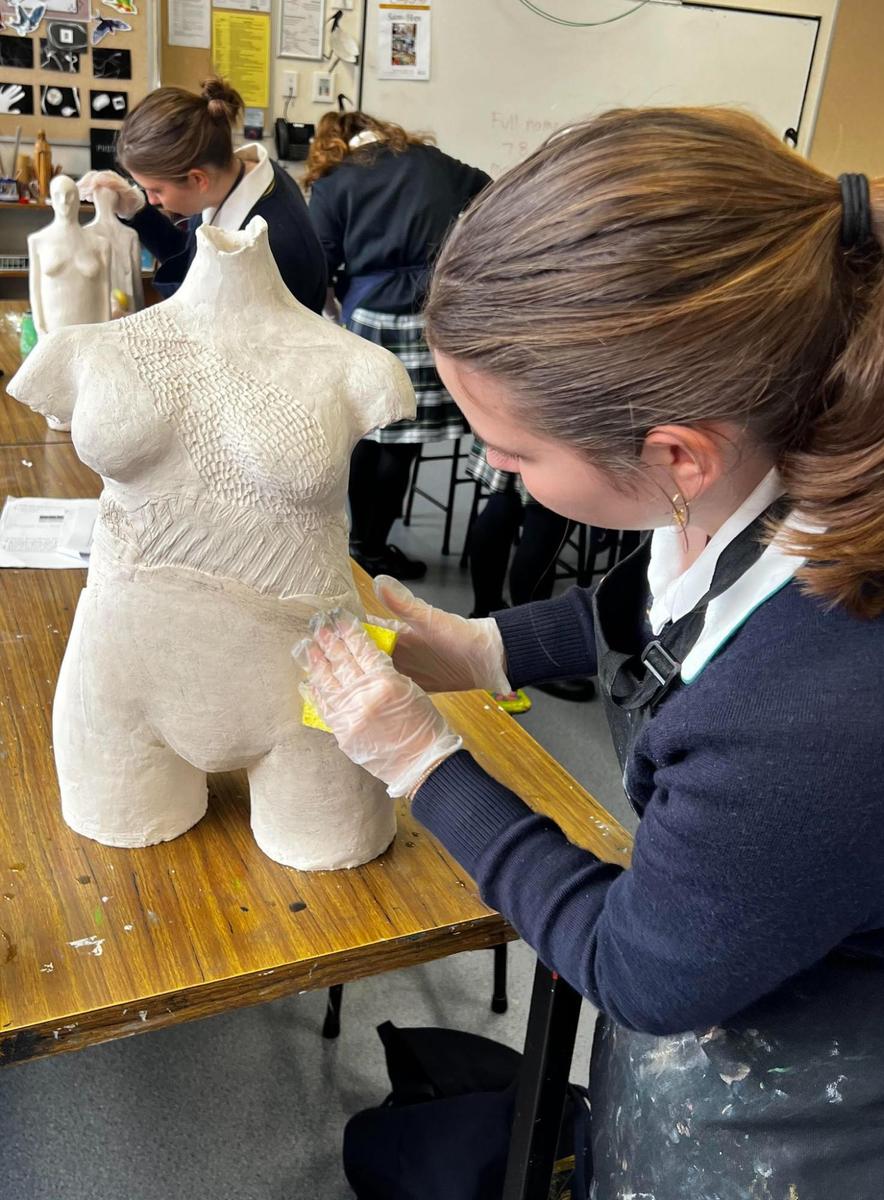






Melissa Nutter
Head of Visual Arts
It’s Shakespeare season at the moment in English classes with many year groups exploring works from Shakespeare’s collection. Year 8’s study of Romeo and Juliet was introduced with a visit by Bell Shakespeare’s Players who performed the controversially titled Shakespeare Is Dead, written by Joanna Erskine. The show contained iconic scenes from ten of Shakespeare’s plays including the tragedies of Romeo and Juliet, Hamlet and Macbeth, the histories of Richard III and Henry V and comedies including The Taming of the Shrew, Much Ado About Nothing and A Midsummer Night’s Dream. The performance used extracts from these plays, energy and humour and some special audience participation to explore how Shakespeare and his characters live on.
Structured in five acts, this high energy and entertaining show taught students how to “do” Shakespeare. They learned:
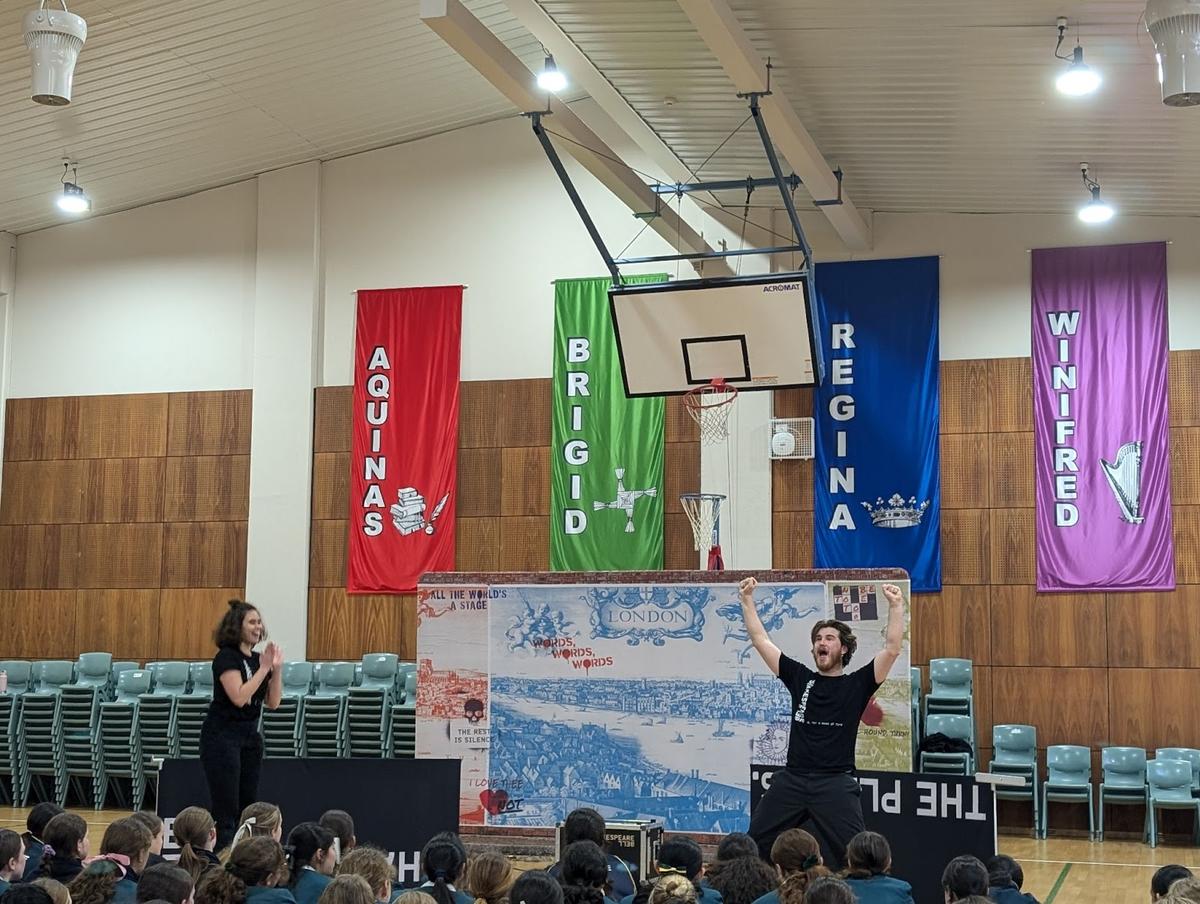





Year 9s are currently discovering the ways Shakespeare’s plays have enduring relevance through their exploration of The Taming of the Shrew and the eternally popular film Ten Things I Hate About You, whilst Year 10 are venturing into the dark world of political corruption and the supernatural in their study of Macbeth. Year 11 Advanced classes have just started their study of Othello, a tragedy whose exploration of power, jealousy, manipulation and control continues to speak to modern audiences.
A Friday afternoon bus stop vox pop brought forth a range of responses from students and some lively debate about their favourite plays so far. Even though it remains undecided if Romeo and Juliet or Macbeth is the better play, all girls affirmed the value of studying Shakespeare and willingly shared some of the things they have learned examining the works of the Bard. Girls were asked why we should study Shakespeare and what they have learned. Below is a quick snapshot of their responses:
It is wonderful that students appreciate the value in studying something that is, at times, hard, and from an unfamiliar context. It’s even better that they enjoy it!
Year 7 News
The stories of resilience, persistence, struggle and family from First Nations women that the girls heard in the NAIDOC assembly in the first week of term were moving and inspirational. Stories are an important way of understanding culture, relationships and the past and year 7s’ current study of Kate Constable’s Crow Country reinforces the messages shared at the assembly. This study encourages empathy and a deeper understanding of Australia's diverse cultural landscape, allowing students to appreciate the value of storytelling in connecting with and learning from the past. The shared themes between Crow Country and the NAIDOC assembly stories enhance students' appreciation for the resilience and strength of First Nations communities, making the lessons both relevant and impactful.
Year 12 News
The year 12 English Advanced students had the chance to revise their core text The Merchant of Venice at the Sport For Jove Shakespeare Symposiums. Part performance, part workshop and part seminar, students had the chance to hear from experienced theatre director Damian Ryan as he directed and unpacked key moments from the play. The dynamic nature of these symposiums provide students with the chance to see the process of a performance start to take shape and form, starting from a deep knowledge of the script and context of the play.
Year 12 students are currently preparing for their Trial exams and many took advantage of the workshops run by class teachers over the 2 week study break. A big thank you must go to the Year 12 English teachers (Mrs Hennessy, Ms Rose, Mr Woolaston, Ms Bacon, Ms Cunliffe and Ms Bassil) for running these workshops for students during the break. As well as revising their texts, the girls are encouraged to prepare by using past papers to help develop their knowledge of the style of questions, build adaptability in their responses, think about their texts from different angles and practise managing the challenge of writing under timed conditions. We wish them all the best for their upcoming exams.
Clare Rose
Assistant Head of English
As we embark on the new term, it's a great time to reflect on the incredible progress and accomplishments of our Science students over the past semester. From investigating chemical reactions in Chemistry to studying body systems in Biology and exploring the mysteries of the universe in Physics, our students have engaged with a wide range of scientific concepts with enthusiasm and curiosity.
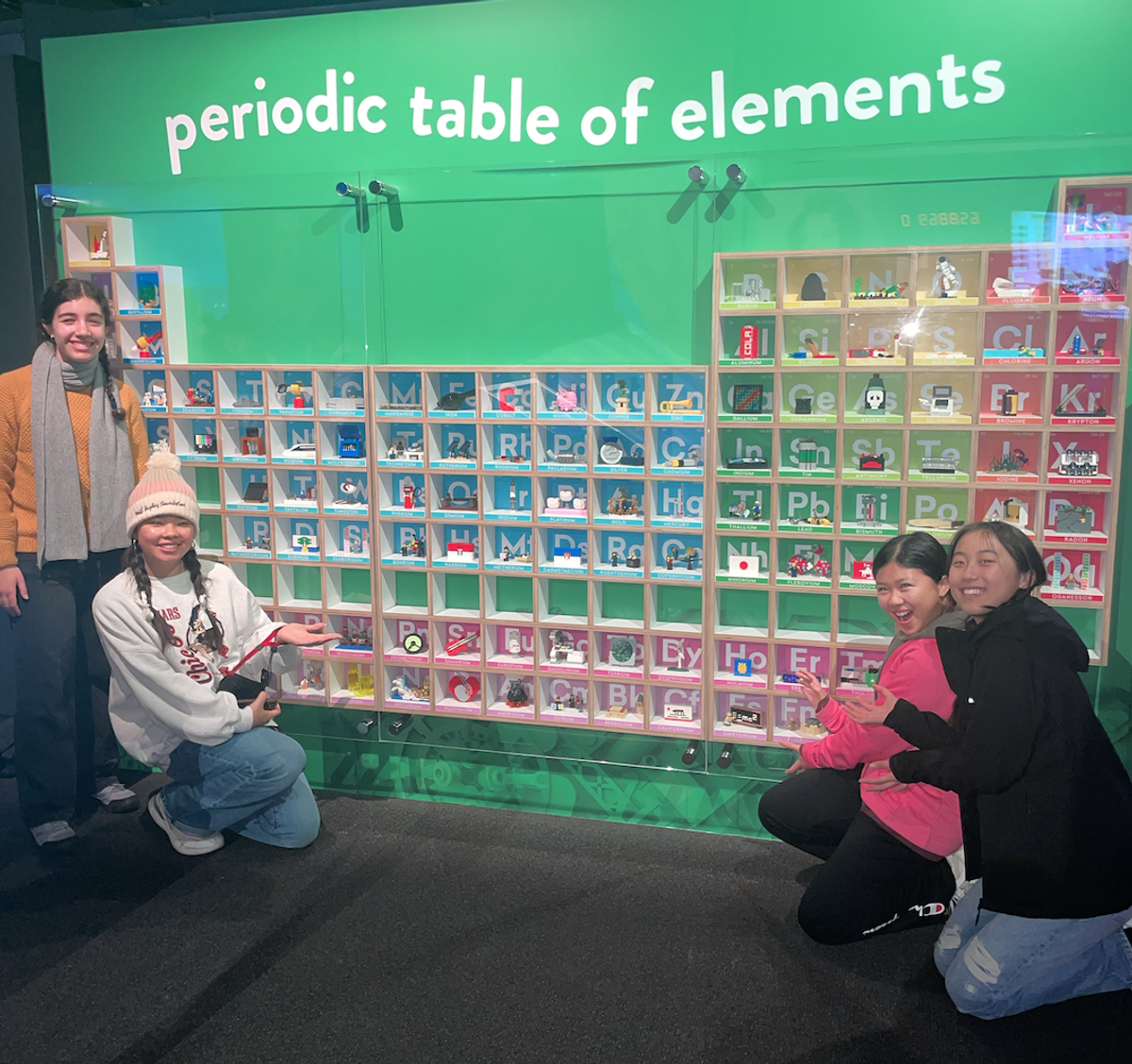

A significant highlight of last term was the Year 10 educational tour of Canberra. This interdisciplinary experience covered both HSIE and Science, allowing students to deepen their understanding of Australia’s history, culture, heritage, and democracy. At the Questacon Science and Technology Centre, students participated in hands-on exhibits and fun interactives, enhancing their grasp of scientific principles and innovations.
This week, our Year 10 students have been delving into the fascinating world of DNA. They demonstrated their understanding by creating detailed DNA models and extracting DNA from strawberries, showcasing their grasp of genetic concepts and their innovative thinking. Year 10 students will continue their journey into Genetics, building on their recent DNA studies to understand inheritance and genetic variation.


Year 7 and Year 9 students are diving into Biology, focusing on ecosystems and the intricate relationships within them. Year 8 students are transitioning into Chemistry, where they will investigate chemical reactions and the properties of different substances.
Looking ahead, we are eagerly anticipating our trip to Taronga Zoo next week with the Year 7 and Year 11 Biology students. These excursions will provide a wonderful opportunity to learn about biodiversity, wildlife, and conservation efforts in an engaging and hands-on environment.
Lastly, our Year 12 students are preparing for the HSC Trial exams. On behalf of the Science department, we wish them the very best in their final school-based assessments.
Amy Commane
Head of Science